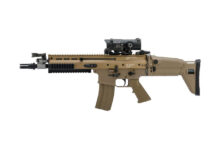In the realm of business-to-business (B2B), the decision as to which window films to choose for privacy within homes or offices is critical to improving safety, temperature regulation, and overall appearance. From business houses to luxury apartments, identifying a functional film laminate with an openness factor that covers privacy and light control is challenging. This article is a comprehensive business guide for owners and managers, construction contractors, and interior designers on choosing the right privacy window films. Furthermore, we will provide information regarding some important factors including the quality brand, kinds of materials used and whether the products are durable or not.
Privacy Needs Assessment
It is therefore crucial to take a scan through the amount of privacy that is required before delving into the types of window films available. Privacy varies depending on where it is needed; for example, the-board of directors’ room might need more privacy than an open office environment. Consider the extent of the need for cleavage or openness both from within and out and should the film give out one-sided privacy or both-sided privacy. Some of these look like they are half transparent where one can see light getting through but one cannot see through directly which is suitable for offices or shared spaces.
Key Questions to Ask:
For such a system, complete or partial privacy is needed, thus the answer is yes.
– How much actual light do they require?
E.g. Will employees or clients want full visibility or a variable type of visibility?
If these needs are clearer at the beginning, then you can cut down selection considerably to improve your decision when going to the supplier.
Different Types of Window Films Explained
There are various types and finishes of window films, and they are different in terms of privacy provision. Here are some commonly used types in commercial and residential applications:
– Frosted Films: These offer a very ‘tinted’ look, that is suitable for interior spaces that need total secrecy while at the same time offering light.
– Reflective Films: These types of films make the outside gleam as if mirrored and, while not opaque during the night, provide quite privacy during daylight.
– Tinted Films: Some of these films come in different colors while others have slightly lower privacy levels but they are perfect for blocking UV and still allow for some level of blind visibility.
– Decorative Films: These films can easily fashion the room because they come in patterns, colors or even customized designs and offer moderate privacy.
Both types of films have distinct qualities that are appropriate for its use depending on the confidentiality level required for a certain business and the design vision of the area.
Role of Quality and Longer Product Life
Long-term use of window films requires that the choice and installation meet the quality and durability of the films. While it is easy to go for cheap films there is no doubt that films from the best window tint brand offer great durability and excellent performance. Poor quality films can easily become damaged through fading due to heat from sun, light, air, humidity or just normal use and wear. Also, good quality brands provide warranty which is further valuable for the businesses planning to install products that would last long.
There is an enhanced film life using a professional installation with a tack solution for PPF (paint protection film) and a better adhesion and easier maintenance form certain films. Choose specific brands that make industrial films which have features such as UV protection, anti-scratch and non-fade in areas where the windows offer direct sun exposure.
Rights of the Installation Process
It is just as important as the film itself, although installation is critical for commercial application in multiple windows or vast spaces. Therefore, it is very important that window films are installed only by qualified personnel who have undertaken work of this scale. If the installation is done incorrectly, then the finishes get peeled off, bubble off, or uneven and this does not portray a well-done work.
Another factor is the kind of glass and amount of exposure to light and other factors that enable professional installers to advise on the right procedure to use when installing these windows. Certain installation types, especially in PPF-backed movies, will likely need particular tack treatments to enhance stickiness and also achieve the best bubble-free finish. Ensuring we achieve quality installation saves future expenses that may be needful for repair or replacement.
Considerations for Installation:
Hiring professionals who in particular have commercial and residential installation experience.
– Query for tack solutions where PPF backed films are used.
– Make sure installers know the various brands of films that are available as well as the various types.
Balancing Privacy with Energy Efficiency
Energy conservation is another growing consideration by B2B customers who want to cut costs and design environmentally friendly facilities. Some of these tailored films provide privacy”in addition to energy savings to regulate heat in the room and minimize the use of air conditioners. Building and constructions with high solar heat gain coefficient assist with reducing the temperature in the interior especially in structures that are exposed to direct sunlight; hence there are reduced HVAC loads and energy costs.
When it concerns structures that have great direct sunlight exposure, better select a movie with the best SRI solar warmth repulsion. The foremost reason for managing privacy is privacy itself and for additional added values such as energy efficiency in films, it would multiply the equalization of the investment and increase the convenience of the space.
Maintaining and Replacing Window Films
This is important because window films have to be maintained in order to serve it function as well as look good for as long as possible. It is unbelievable but most polished films do not need any chemical treatment, they simply need to be washed gently with non- abrasive solutions. Nevertheless, it can be mentioned that even the best of films will develop some kind of wear after some time is exposed. It is helpful to know when a film needs to be changed in order to keep your environments’ appearances neat and ensure the best levels of privacy.
Maintenance Tips:
It should be cleaned with a gentle detergent or any gentle heated pad that would not harm the finish.
Do not touch the film with sharp knives or any other object that may bring scratches on the surface of the film.
It is recommended to check usually for signs of pastel winging, fading, bubbles or even peeling.
In the large properties, set a pattern of how the property is to be maintained to ensure some area is not left out and one should also ensure to keep documents of all warranty notices for ease of accessing them should a replacement be needed.
Conclusion:
Choosing the right privacy window tinting is a complex process which depends on the characteristics of the room, the quality of the film, price and possibility of installation. Selecting a good brand, hiring a professional to do the installation procedure and using tack solution for PPF and finally following the installation with adequate maintenance would help the B2B businesses to get the best result from their window films. On the same note, if well applied window films can improve privacy at the same time giving the desired aesthetic boost for any commercial or even residential property leading to ultimate security and comfort.





